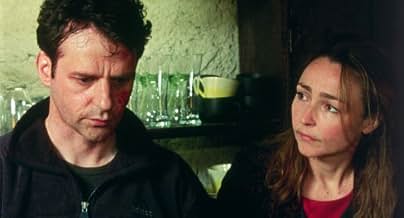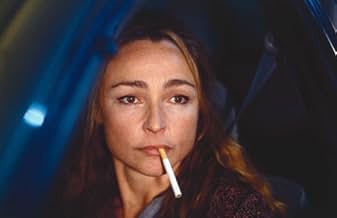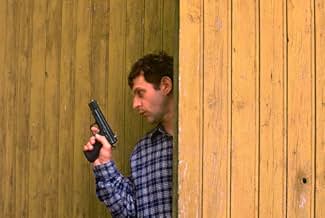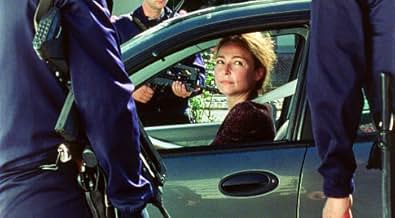"On the Run (Cavale)" is the first third of an engrossing experiment in story telling that crosses "Rashomon" with a television miniseries to show us an ensemble of intersecting characters over a couple of days to gradually reveal the complicated truth about each.
Writer/director Lucas Belvaux uses a clever technique to communicate just how differently the characters perceive the same situations-- they are literally in different movies and, a la "Rules of the Game," everyone has their reasons.
"On the Run"is a tense, fast-paced escaped con on-the-run Raoul Walsh-feeling film, with the auteur himself playing a Humphrey Bogart-type who can be cruel or kind; "An Amazing Couple (Un couple épatant)" is an Ernest Lubitch-inspired laugh-out-loud comedy of mistaken communication; and "After the Life (Après la vie)" is a Sidney Lumet-feeling gritty, conflicted cop melodrama with seamy and tender moments.
"Time Code" experimented turning the two-dimensions of film into three with multiple digital video screens. This trilogy is more effective in showing us what happens as characters leave the frame. Belvaux goes beyond the techniques used in the cancelled TV series "Boomtown" or the films of Alejandro González Iñárritu in "Amores Perros" and "21 Grams" with their stream-of-consciousness flashbacks character by character.
I don't see how I can deal with each film separately. Theoretically, one can see the three movies alone or independently out of order, but that would be like watching one episode of a series like "The Wire" or "The Sopranos" and wondering what the big deal is. Only a handful of patrons in my theater joined me in a one-day triple-feature; I guess the others have a better memory than I do that they could see each film on separate days, though a marathon does inevitably lead to some mind-wandering that could miss important clues and revelations so this is ideal for a triple-packed DVD.
On DVD we'll be able to replay the excellent acting to see if in fact the actors do shade their performances differently when particular scenes are enacted from different characters' viewpoints -- are these takes from the same staging or not? How is each subtly different that we get a different impression each time? Or are we bringing our increasing knowledge (and constantly changing sympathies) about each character to our impressions of the repeating scenes?
One reason this conceit works is because of the unifying theme of obsession - each character is so completely single-minded in their focus on one issue that they are blind to what else is happening even as they evolve to find catharsis. One is literally a heroin addict, but each has their psychological addiction (revenge, co-dependence, hypochondria, jealousy).
The slow revelation technique also works because of the parallel theme of aging and acceptance of the consequences of their actions, as some can face how they have changed and some can't change. You need to see all three films to learn about each character's past and conclusion, as secondary characters in one film are thrust to the fore in another in explaining a key piece of motivation.
The only place they really interchange is in an ironically, meaningless political debate at the public high school they each have some tie to.















